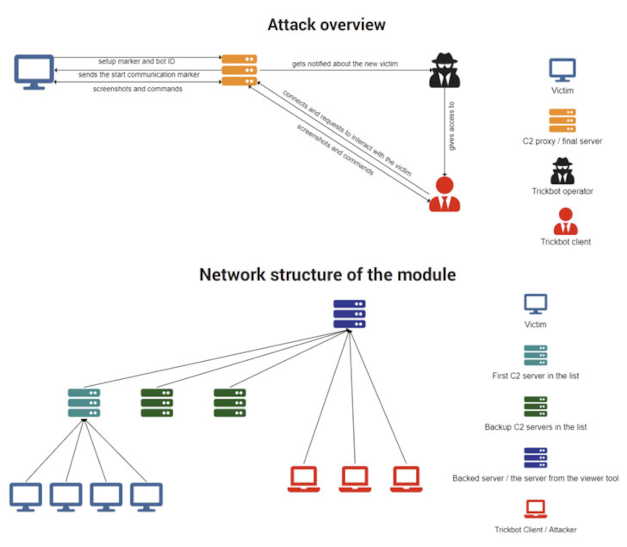
Cybersecurity researchers have opened the lid on the continued resurgence of the insidious TrickBot malware, making it clear that the Russia-based transnational cybercrime group is working behind the scenes to revamp its attack infrastructure in response to recent counter efforts from law enforcement.
The new capabilities discovered are used to monitor and gather intelligence on victims, using a custom communication protocol to hide data transmissions between [command-and-control] servers and victims — making attacks difficult to spot, Bitdefender said in a technical write-up published Monday, suggesting an increase in sophistication of the group’s tactics.
Trickbot shows no sign of slowing down, the researchers noted.
Botnets are formed when hundreds or thousands of hacked devices are enlisted into a network run by criminal operators, which are often then used to launch denial-of-network attacks to pummel businesses and critical infrastructure with bogus traffic with the aim of knocking them offline. But with control of these devices, malicious actors can also use botnets to spread malware and spam, or to deploy file-encrypting ransomware on the infected computers.
TrickBot is no different. The notorious cybercrime gang behind the operation — dubbed Wizard Spider — has a track record of exploiting the infected machines to steal sensitive information, pivot laterally across a network, and even become a loader for other malware, such as ransomware, while constantly improving their infection chains by adding modules with new functionality to increase its effectiveness.

TrickBot has evolved to use a complex infrastructure that compromises third-party servers and uses them to host malware, Lumen’s Black Lotus Labs disclosed last October. It also infects consumer appliances such as DSL routers, and its criminal operators constantly rotate their IP addresses and infected hosts to make disruption of their crime as difficult as possible.
The botnet has since survived two takedown attempts by Microsoft and the U.S. Cyber Command, with the operators developing firmware meddling components that could allow the hackers to plant a backdoor in the Unified Extensible Firmware Interface (UEFI), enabling it to evade antivirus detection, software updates, or even a total wipe and reinstallation of the computer’s operating system.
Now according to Bitdefender, the threat actor has been found actively developing an updated version of a module called “vncDll” that it employs against select high-profile targets for monitoring and intelligence gathering. The new version has been named “tvncDll.”